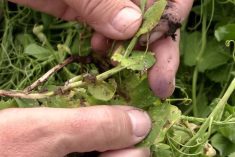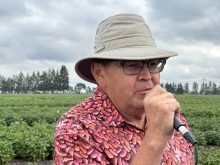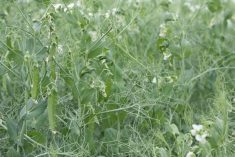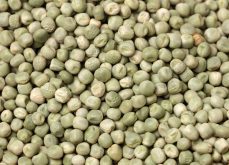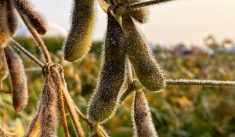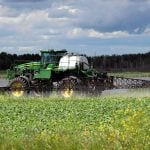Last summer did not provide an ideal growing season so peas took a beating.
The drought of 2021 is now in the archives and, with spring looming, Roquette Canada agronomist Anastasia Kubinec suggests Manitoba growers might consider peas again.
“The pea fields have really increased when we start looking at the landscapes in Manitoba,” she said. “Back in 2017, we were sitting on about 65,000 acres. For 2021, we were actually at about 212,000 acres so it has dramatically increased.”
Kubinec said the huge increase shows a lot of producers were either growing their first pea crop or the first one in several years. They saw the market potential, some good pricing and higher fertilizer prices.
Read Also
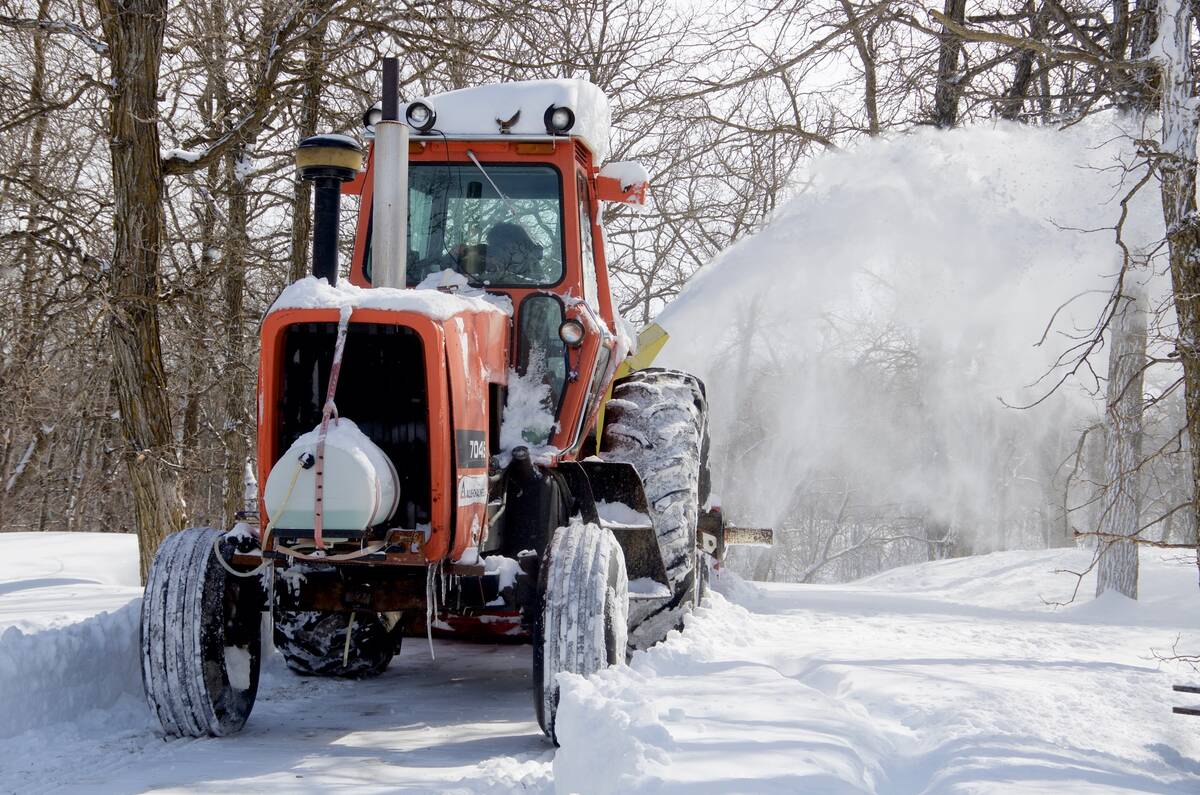
Prairie farms race to get ready for winter 2025
Equipment needs to be winterized and stored; fall field work needs to be done and there are a million tiny jobs to make sure both the farm yard and farm house are ready for the snow to fly
Since peas can fix their own nitrogen, a good yield on a pea crop can make economic sense. Crop insurance data pegs average yields at 47 bushels per acre in Manitoba, although it was about 36 bu. per acre last year.
“No surprise to anybody, peas actually need some rain to get yield,” she said.
“The worst-affected areas corresponded to the least amount of rain and that was pretty common for any crop, whether it be canola, wheat or peas. We needed that rain to get those yields coming.”
Some pea crops in the northwest had reasonably good yields despite the drought. Last summer’s parched fields also look better under this winter’s snowpack, which may help top up soil moisture.
Kubinec has suggestions for growers who are putting peas in the rotation this year, starting with plant stand.
“We really like that seven to nine plants per square foot,” she said. “Plant counts are really important and if we can start off right, we’re really going to set ourselves up for success regardless of the weather that we’re going to get later on in the season.”
Good stand density starts with calibrating the seeder. The first things to consider are seed size in 1,000 kernel weight and germination rate.
These two factors will determine how many bushels per acre to set for the seeder. Make sure the seeder is in good working order and handle the seeds carefully, she advises.
“I really would recommend gentle handling and using a conveyor is a great idea. If you have an auger, make sure it’s full, make sure it’s low speed and then that will reduce some of the cracking and damage. Those two things will help your germination going into the field.”
Accurate seeding equipment is also vital to achieve even seed depth for consistent emergence.
Gauging nitrogen may be tricky this spring. Reduced growth during last year’s drought could mean there’s nitrogen still in the soil.
For some crops, this could save on the nitrogen bill. For peas, it presents a tricky problem because of nodulation. If peas have enough nitrogen, they may not bother with nodules.
“It’s a cost to pea plants to produce those nodules so if there is nitrogen in the soil the plant is going to use it,” Kubinec said.
“(If) you’ve got lots of nitrogen there, nodulation on the peas will be reduced and we may start running into issues where you have an amazing-looking crop going into flowering but if there are no nodules it could run out of nitrogen and you may get really limited yields because it did not have enough to support the pod set and the seed fill.”
Pea growers should ensure there’s enough inoculant to trigger nodulation when the plant needs it. Inoculants may be liquid or granular.
Kubinec recommends granular because it is more consistent under different soil conditions and lasts longer. Another trick, especially for first-time growers, is double inoculation.
“Double inoculation is a really good opportunity to make sure that inoculation gets off to the best start,” she said. “It could be liquid on seed, granular in row, it could be double granular, it could be a whole bunch of different combinations to make sure those nodules are there to get you off to a great start.”
Herbicide carry-over is another consideration. If fields were treated with clopyralid or flucarbazone products, they may still be active because of last year’s dryness. In that case, those fields aren’t suitable for peas.
“Another one that we’re looking at is pyrasulfotole due to the high pH and low organic matter,” she said. “In 2021 we saw this issue on eroded knolls, sandy patches, areas where we typically know that we do have higher pHs and low organic matter.”
Peas are subject to a few insect pests. Pea weevils are present in the Swan River and Reston areas and as far west as Holland. Look for damage along leaf margins.
“It looks like that nice, beautiful, ruffled edge of a doily,” Kubinec said. “So, if you do see that interesting leaf margin, you will probably find the weevil close by. Pick it up, send it off to (Manitoba government entomologist) John Gavloski and he will identify it for you.”
Peas are also susceptible to aphanomyces, a soil-borne root rot. It is typically seen in the southwest but was confirmed in Swan River and near Arborg last year.
Unlike most root rots, aphanomyces is caramel coloured rather than black so accurate identification is important.
No pea varieties have resistance but there are registered seed treatments.
“The prevalence of this disease is going to increase as we grow more peas and in short rotations,” Kubinec said.
“Right now, our pea rotation, one in four or one in five years is good. Don’t grow it back to back and if you start getting aphanomyces, you are going to need to extend that rotation even longer.”




